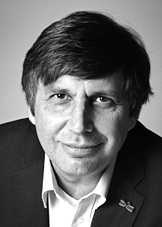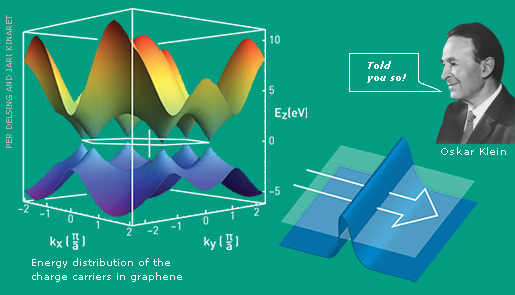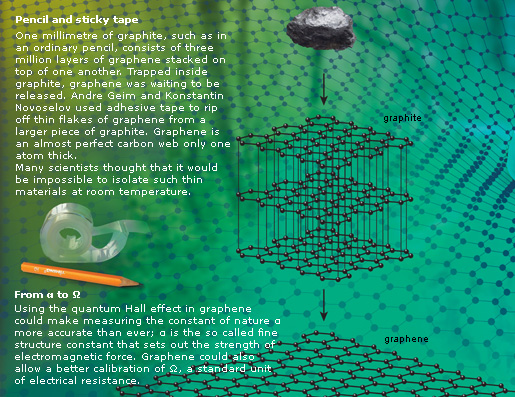C reative
Particle
Higgs
CPH Theory is based on Generalized light velocity from energy into mass.
CPH Theory in Journals
|
Nobel 2010
|
|
The Nobel Prize in Physics 2010
Photo: U. Montan
Andre Geim
Photo: U. Montan
Konstantin NovoselovThe Nobel Prize in Physics 2010 was awarded jointly to Andre Geim and Konstantin Novoselov "for groundbreaking experiments regarding the two-dimensional material graphene"
Graphene � the perfect atomic latticeGraphene is a form of carbon. As a material it is completely new � not only the thinnest ever but also the strongest. As a conductor of electricity it performs as well as copper. As a conductor of heat it outperforms good conducting metals such as silver and copper. It is almost completely transparent, yet so dense that not even the smallest gas atoms can pass through it. It is so strong that a 1 m2 hammock, no heavier than a cat�s whisker, could bear the weight of an average sized cat without breaking.
In a world of paradoxesAndre Geim and Konstantin Novoselov used a piece of graphene no thicker than the diameter of a hair in order to investigate the miraculous traits of graphene. The most remarkable is that electrons travelling in graphene behave as if they did not have any mass and move ahead at a constant speed of one thousand kilometersper second. This opens up the possibility of studying certain phenomena more easily on a smaller scale, i.e. without the use of a large particle accelerator.
Graphene also allows scientists to test for some of the more ghost-like quantum effects that have so far only been discussed theoretically. One such phenomenon is a variant of Klein tunnelling, which was formulated by the Swedish physicist Oskar Klein in 1929. This tunnel effect in quantum physics describes how particles can sometimes pass through a barrier that would normally block them – the larger the barrier the smaller the chance of quantum particles passing through. However, this does not apply to electrons travelling in graphene – in some circumstances they move ahead as if the barrier did not even exist.
Dream worldsSo far, most of the possible practical applications for graphene exist only in our fantasies. A great deal of interest has been spurred by graphene’s conducting ability. Thus graphene transistors are predicted to be substantially faster than those made out of silicon today. Maybe we are on the verge of yet another miniaturization of electronics that will lead to computers becoming even more efficient in the future.
Since graphene is practically transparent (up to nearly 98%) whilst being able to conduct electricity, it would be suitable for the production of transparent touch screens, light panels and maybe solar cells. Also plastics could be made into electronic conductors if only 1% of graphene were mixed into them. Likewise, by mixing in just a fraction of a per mille of graphene, the heat resistance of plastics would increase by 30˚ C while at the same time making them more mechanically robust. This resilience could be utilised in new super strong materials, which are also thin, elastic and lightweight.
1 2 3 4 5 6 7 8 9 10 Newest articles
|
|
Sub quantum space and interactions from photon to fermions and bosons |
Interesting articles
Since 1962 I doubted on Newton's laws. I did not accept the infinitive speed and I found un-vivid the laws of gravity and time.
I learned the Einstein's Relativity, thus I found some answers for my questions. But, I had another doubt of Infinitive Mass-Energy. And I wanted to know why light has stable speed?




